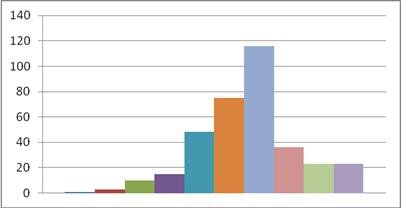Banks Just Mad About Bitcoin, Blockchain, Ledgers, Whatever?!
Tuesday, 02 February 2016By Michael Mainelli
Despite being launched on 1 January 2009, it took banks half a decade to figure out that ‘bit’ and ‘coin’ might matter to their businesses. In 2014 they went Bitcoin mad. A bunch of highly-paid strategists and technologists managed to read the literature and conclude that the half century and more information technology revolution could finally destroy retail payments as they knew them.
In 2014, the Bank of England and others pointed them deeper. “Although the monetary aspects of digital currencies have attracted considerable attention, the distributed ledger underlying their payment systems is a significant innovation.”
So, in 2015 the banks went blockchain mad. A bunch of highly-paid strategists and technologists managed to read the literature and conclude that the half century and more information technology revolution could finally destroy banks as they knew them.
In 2015, the Bank of England and others pointed them deeper. “There is more than one way in which a distributed ledger system can work, and remuneration would have to be designed in such a way as to incentivise honest participation in the system without leading to socially inefficient over-investment in transaction verification.”
At the turn of the year, Z/Yen conducted a snap survey of our Global Financial Centres Index community, asking: “On a scale of 1 to 10, how significant will Mutual Distributed Ledgers (aka blockchain technology) be for finance (where say, “the ATM” = 3, “the computer” = 5, “the internet” = 7)”. We had 350 responses of which 200 scored the importance as seven or higher and the overall mean score was 6.6 and the mode (with 116 responses) was 7. Current financial sentiment? “Mutual distributed ledgers are going to be as big as the internet for finance”.

BAFT is the global transaction banking club. At January’s BAFT Global Annual Meeting in Paris the talk was all about mutual distributed ledgers. 200 business and product heads concluded:
- The SWIFT (Society for Worldwide Interbank Financial Telecommunication) network for payments should be extended (71%) or replaced (18%) by mutual distributed ledgers;
- The number of mutual distributed ledgers will be multitudes (more than one billion, 16%) or many (thousands to millions, 48%) rather than few (e.g. Bitcoin, Ripple, Ethereum, 33%) or one (3%).
So, in 2016 the banks are going distributed ledger mad. This may matter. Several contradictions of a ‘pure Bitcoin blockchain’ have been ignored along the way, such as the energy consumption of the Bitcoin protocol, that cryptocurrencies only trade numbers that still need to be exchanged for real assets, and that (heresy for banks) not all transactions are about money. Transactions and ledgers also apply to identity systems, document messaging, electronic device controls, archives, timestamps, and more. It may be evolution rather than revolution. Stirring not shaking.
But do they know what they don’t know? 70% at BAFT replied ‘yes’ to “Is your bank currently using or planning to use blockchain technology?”. But 69% replied ‘no’ to “Do you feel that you have a good grasp of blockchain technology, i.e. how it works, etc.?”.
Prospect Theory indicates that a mania among smaller players is motivated by the prospect of big gains, but the motivation for big committed players is largely born of panic at losses, not at excitement from potential gains. Fear is a poor motivator for a technology that can significantly improve efficiency and effectiveness for customers. Hopefully 2016 is a year of training and learning before banks leap onto the next B-Bandwagon.
Related Links
- Coindesk, February 2016: BAFT Event Attendees See Future With Billions of Blockchains